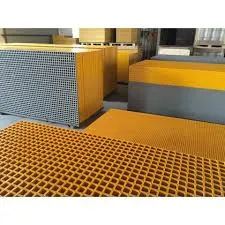
-
 Afrikaans
Afrikaans -
 Albanian
Albanian -
 Amharic
Amharic -
 Arabic
Arabic -
 Armenian
Armenian -
 Azerbaijani
Azerbaijani -
 Basque
Basque -
 Belarusian
Belarusian -
 Bengali
Bengali -
 Bosnian
Bosnian -
 Bulgarian
Bulgarian -
 Catalan
Catalan -
 Cebuano
Cebuano -
 China
China -
 China (Taiwan)
China (Taiwan) -
 Corsican
Corsican -
 Croatian
Croatian -
 Czech
Czech -
 Danish
Danish -
 Dutch
Dutch -
 English
English -
 Esperanto
Esperanto -
 Estonian
Estonian -
 Finnish
Finnish -
 French
French -
 Frisian
Frisian -
 Galician
Galician -
 Georgian
Georgian -
 German
German -
 Greek
Greek -
 Gujarati
Gujarati -
 Haitian Creole
Haitian Creole -
 hausa
hausa -
 hawaiian
hawaiian -
 Hebrew
Hebrew -
 Hindi
Hindi -
 Miao
Miao -
 Hungarian
Hungarian -
 Icelandic
Icelandic -
 igbo
igbo -
 Indonesian
Indonesian -
 irish
irish -
 Italian
Italian -
 Japanese
Japanese -
 Javanese
Javanese -
 Kannada
Kannada -
 kazakh
kazakh -
 Khmer
Khmer -
 Rwandese
Rwandese -
 Korean
Korean -
 Kurdish
Kurdish -
 Kyrgyz
Kyrgyz -
 Lao
Lao -
 Latin
Latin -
 Latvian
Latvian -
 Lithuanian
Lithuanian -
 Luxembourgish
Luxembourgish -
 Macedonian
Macedonian -
 Malgashi
Malgashi -
 Malay
Malay -
 Malayalam
Malayalam -
 Maltese
Maltese -
 Maori
Maori -
 Marathi
Marathi -
 Mongolian
Mongolian -
 Myanmar
Myanmar -
 Nepali
Nepali -
 Norwegian
Norwegian -
 Norwegian
Norwegian -
 Occitan
Occitan -
 Pashto
Pashto -
 Persian
Persian -
 Polish
Polish -
 Portuguese
Portuguese -
 Punjabi
Punjabi -
 Romanian
Romanian -
 Russian
Russian -
 Samoan
Samoan -
 Scottish Gaelic
Scottish Gaelic -
 Serbian
Serbian -
 Sesotho
Sesotho -
 Shona
Shona -
 Sindhi
Sindhi -
 Sinhala
Sinhala -
 Slovak
Slovak -
 Slovenian
Slovenian -
 Somali
Somali -
 Spanish
Spanish -
 Sundanese
Sundanese -
 Swahili
Swahili -
 Swedish
Swedish -
 Tagalog
Tagalog -
 Tajik
Tajik -
 Tamil
Tamil -
 Tatar
Tatar -
 Telugu
Telugu -
 Thai
Thai -
 Turkish
Turkish -
 Turkmen
Turkmen -
 Ukrainian
Ukrainian -
 Urdu
Urdu -
 Uighur
Uighur -
 Uzbek
Uzbek -
 Vietnamese
Vietnamese -
 Welsh
Welsh -
 Bantu
Bantu -
 Yiddish
Yiddish -
 Yoruba
Yoruba -
 Zulu
Zulu
frp duct system
Understanding FRP Duct Systems A Modern Solution for Ventilation and Drainage
Fiber-Reinforced Polymer (FRP) duct systems have gained significant popularity across various industries due to their superior performance and versatility. As a composite material, FRP combines polymers with reinforcing fibers, such as glass or carbon. This innovative structure results in a lightweight yet incredibly strong material, making it an optimal choice for ducting systems used in ventilation, drainage, and chemical processing applications.
Understanding FRP Duct Systems A Modern Solution for Ventilation and Drainage
Another notable benefit of FRP duct systems is their lightweight nature. Compared to metal ducts, FRP ducts are considerably easier to handle and install, which can lead to reduced labor costs and faster project completion times. This lightweight characteristic also reduces the structural load on buildings, minimizing the need for additional support structures. As a result, architects and engineers can design more flexible and innovative spaces without compromising safety or performance.
frp duct system

In terms of thermal and acoustic insulation, FRP ducts excel as well. They can be designed with various insulation properties, which help maintain optimal temperatures within the duct and reduce energy consumption. Additionally, FRP’s inherent qualities help minimize noise transmission, enhancing comfort in environments where sound control is crucial, such as offices, hospitals, and schools.
Environmental considerations are also integral when discussing FRP duct systems. Many manufacturers utilize recyclable materials in their production, aligning with contemporary sustainability goals. By opting for FRP systems, industries can reduce their environmental footprint while benefiting from a product designed for durability and resilience.
Moreover, FRP duct systems offer robust design flexibility. They can be customized to meet specific application requirements, including varying shapes, sizes, and configurations. This versatility allows engineers to create tailored solutions for unique projects, optimizing airflow and performance while ensuring compliance with safety regulations and industry standards.
In conclusion, FRP duct systems represent a modern and efficient solution for a range of applications, offering exceptional durability, lightweight handling, corrosion resistance, and environmental sustainability. As industries continue to seek innovative materials that meet the demands of challenging working conditions, the adoption of FRP technology is likely to grow, paving the way for enhanced efficiencies in ventilation and drainage systems.









